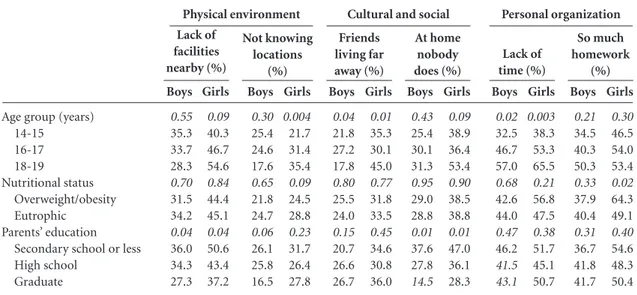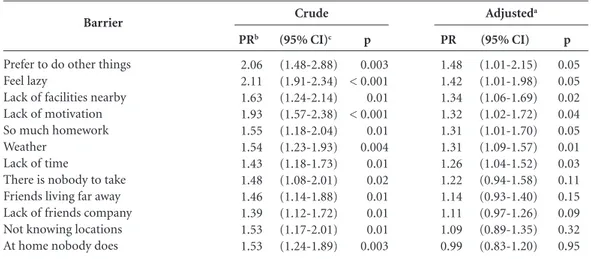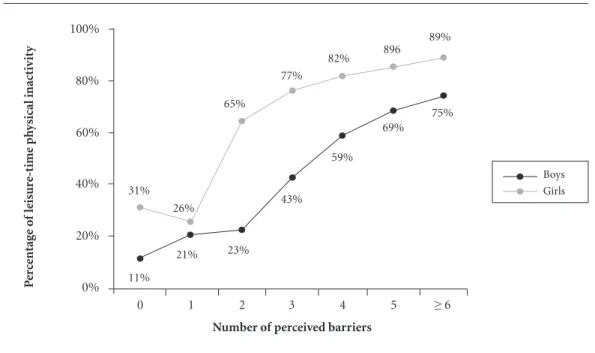Ciênc. saúde coletiva vol.20 número11
Texto
Imagem



Documentos relacionados
Conclusions: The prevalence of abdominal obesity was low compared to that observed in international studies, and physical activity was a factor associated with the occurrence of
The objectives of this study were to identify the levels of physical activity and socio-demo- graphic factors associated with leisure-time physical inactivity among women 18 to 69
This study aimed to investigate whether leisure- time physical activity is associated with percep- tions of the social and physical living environ- ment in different
The results obtained in this study show that the International Physical Activity Questionnaire (IPAQ); long version; usual /ordinary week; presents excellent test
With regard to physical activity, we col- lected information on the type of exercise practiced; frequency or lack of leisure-time physical activity (active and inactive leisure
OBJECTIVE: To analyze physical activity during adolescence in participants of the 1993 Pelotas Birth Cohort Study, Brazil4. METHODS: Data on leisure time physical activity at 11,
For the evaluation of physical activity, the Interna- tional Physical Activity Questionnaire-Version 8; long form (IPAQ-Version 8.0) is one of the most widely used instruments 8. In
he results of this study indicated that physical activity performed during leisure time and total physical activity (work, transportation, housework and leisure) can predict